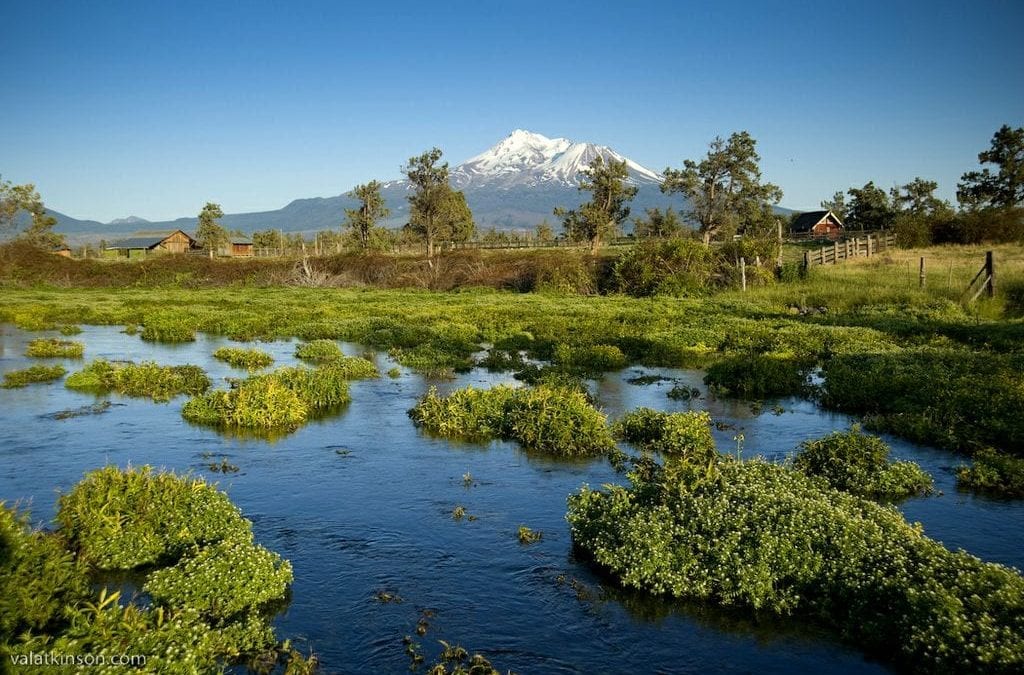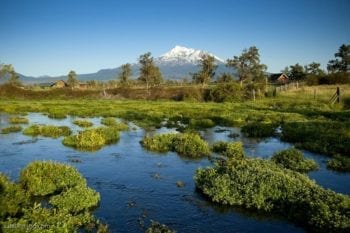Understanding Northern California’s Spring Water Sources
The following Op-Ed by CalTrout’s Mt. Shasta/Klamath Director, Andrew Braugh, appeared this week in Redding’s Record Searchlight.
Northern California Spring Water Sources Key to Weathering Drought and Climate Change
By California Trout
The winter of 2015 was the driest winter in California’s recorded history. But despite the great drought—and perhaps the worst arid spell for California in 1,200 years—spring-fed water flows steadily in Northern California.
You read that correctly. Even with a fourth consecutive summer of record setting drought, water from the depths of Mt. Shasta, Mt. Lassen, and the Medicine Lake Volcano rises insistently to the surface providing life for people, fish and wildlife, agriculture, and hydropower.
As the drought reduces rain water and snow melt, spring water acts as an emergency reserve, currently pumping 1.7 billion gallons a day into Shasta Reservoir. In total, over two million acre feet per year of spring-sourced water flows from our region’s aquifers into Shasta Reservoir—California’s largest—accounting for about one-half of total storage capacity. Thanks to this water source, Shasta Reservoir is currently maintaining 61% of its historic average: more surface storage than any reservoir in the state (CA Department of Water Resources, 2015).
Despite the undeniable importance of this water source, we know surprisingly little about the complex geochemical processes that fuel our major regional spring systems.
It wasn’t until 2014 that researchers verified that the source of Fall River water—one of the largest spring-fed rivers in the entire western United States—originates from the Medicine Lake Volcano aquifer located just 30 miles east of Mount Shasta.
In response to our poor scientific understanding of source water, California Trout is launching a new assessment of California’s most valuable spring systems throughout the Klamath-Cascade region.
The purpose of the study is three fold:
First, establish a scientific baseline for all large-volume spring systems throughout the region. Second, identify important recharge areas and potential stressors. Last, inform decision makers tasked with making tough decisions about critical issues to California’s water and energy future, including geothermal development, groundwater pumping, additional surface storage, and water for agriculture and the environment.
The study will include, among others, Fall River, Hat Creek, the Shasta River, and the famous McCloud River. Our Fall River work is especially important as Calpine Energy proposes geothermal development in the Medicine Lake Highlands.
Not coincidently, the assessment will also include Big Springs, an important cold-water spring source to the Upper Sacramento River and lightning rod of controversy surrounding Crystal Geyser Water Company in Mt. Shasta.
Crystal Geyser plans to invest $50 million to upgrade an existing bottling facility that draws water from the same aquifer that fuels Big Springs. Although Crystal Geyser is confident their operations won’t affect the springs or groundwater levels, their plans naturally raise questions about the vulnerability of the aquifer.
To begin addressing these questions CalTrout has developed a detailed study plan for Big Springs, which includes four new gaging stations and a real-time monitoring system that will measure possible changes in flow or water quality. Crystal Geyser fully supports this effort.
As with all our restoration efforts throughout the state, CalTrout is committed to pursuing scientifically-based solutions to complex natural resource issues. With the right approach, we can elevate public policy that balances the needs of fish, water, and people. But in the context of extreme drought, a changing climate, and increasing water demand, we need to improve our scientific understanding of these systems because spring-sourced water is more important than ever.






